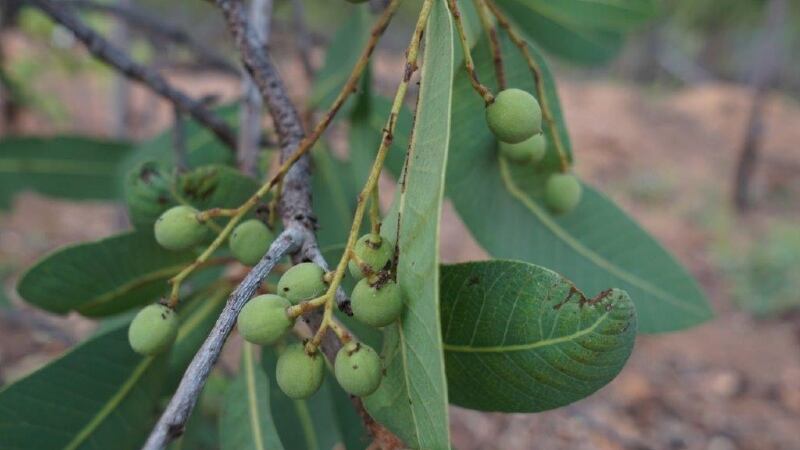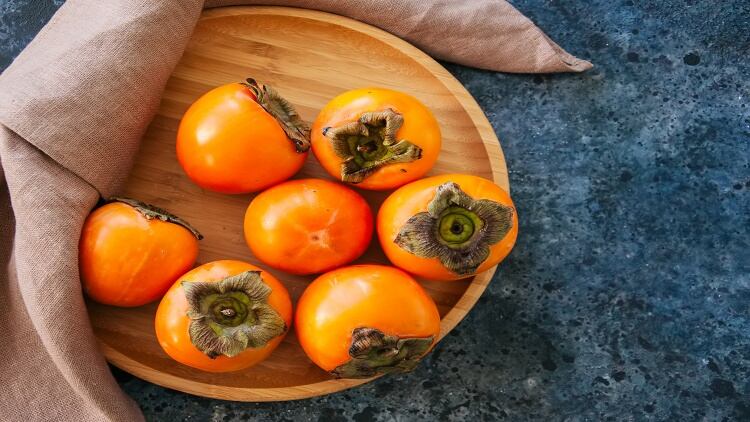The green plum Buchanania obovate is believed to have been known to and consumed by Aboriginal communities for millennia but is as yet mostly unknown to the world, though a research team from the University of Queensland and Queensland Alliance for Agriculture and Food Innovation (QAAFI) hopes to change this.
It looks like a miniature mango and indeed comes from the same Anacardiaceae family from which mangoes, cashew apples and pistachio nuts hail, and turns yellow-green when ripe, hence the name.
“The green plum is solely unique to Australia, and is so sweet and tastes so good that if made into, say, a puree, I don’t think any extra sugar needs to be added to make it palatable and tasty, it could probably be used like that straight,” food scientist and PhD candidate Selina Fyfe told FoodNavigator-Asia.
“The main appeal for the Aborigine communities that have been eating these for what we believe is 53,000 years is really the taste. We’ve done a sensory analysis and it’s sweet, just a little bit sour, and is very much like stewed fruit. It’s very hard to stop eating once you’ve started, and I’ve even had people tell me that it tastes like lollies.”
If the plum does turn out to be naturally sweet enough to be used without added sugar – something that the team is looking at - this could be a key driver for its commercialisation as an ingredient in a time when many food and beverage companies are on the lookout for alternatives to cater to consumer demand for sugar-free/less-sugar products.
Aboriginal communities in the areas where the green plum grows wild abundantly, such as the northern part or the Northern Territory and Western Australia, are interested in commercializing the fruit, but the remoteness of these areas makes preservation an important factor to consider.
“Part of my research is looking at the nutritional value of the green plum including metabolites, so its sugars, amino acids, food acids and so on – we want to understand the best way to preserve and maintain the nutritional properties of the fruit if it is processed into, say, a powder or puree,” said Fyfe.
“At the moment, these communities eat the green plum in three ways: as a fruit with the seed discarded, dried like a sultana which softens the seed and makes it edible, and smashing the seed and fruit into a pulp which they feed to their elderly and children.
“Given how remote the areas where the plum grows are, it would be likely that the indigenous communities could do the basic processing before these are transported anywhere, so things like peeling, seed removal, drying, freezing, pureeing – it really depends on the final format.
Apart from powders and purees, she also envisions the green plum having commercial applications in desserts such as yoghurt or ice cream, utilizing its unique sweet and sour flavour to complement other ingredients, thought the viability of this will take more research to verify
“The Kakadu plum, which this green plum is not to be mistaken for, is usually pureed and powdered and frozen so we think this is also viable for the green plum, but other applications need more investigation,” she said.
Nutritional benefits
Another big draw factor for the green plum is its high nutritional value, both in its fruit and seed – It is high in folate, protein, dietary fibre, potassium, magnesium, calcium and phosphorus; whereas the seed is high in dietary fibre, iron and anthocyanin.
The high folate levels were the most surprising find for the team, apart from the sweet taste, said Fyfe.
Her supervisor and lead researcher Associate Professor Yasmina Sultanbawa added that the green plum contained one of the highest known folate levels of any fruit on the commercial market.
“This is really exciting because folate is an important B-group vitamin, and what’s great about the green plum is that the folate is in a natural form so the body absorbs it more easily than in a capsule,” she said.
Commercialisation by aboriginal firms
The commercialisation process is expected to take two or three years to materialise, and Fyfe hopes that this will remain with indigenous-owned firms.
“It would be good to keep it indigenous, with companies such as Wild Orchard Kakadu Plum which is aborigine-owned and so can make sure the local communities can be the ones to harvest and commercialise to keep the benefits local too,” she said.
“We’ve also collaborated with the Aboriginal-owned Gulkula nursery in Gove, East Arnhem Land, who have successfully propagated the green plum.”
The Gulkula nursery is owned by the Yolŋu people, who have their own Aboriginal name for the plum: Munydjutj.
“To give an idea of just how engrained this fruit is in the local culture, each Aboriginal tribe actually has its own name for the plum. It is also part of the indigenous seasons calendar for various Aboriginal communities, which are calendars representing each community’s harvest seasons,” she added.
No intellectual property of any sort has been filed as of yet, but the entire research project is being funded under the Australian Research Council’s Industrial Transformation Training Centre’s program for Uniquely Australian Food, which also has another arm looking at the IP aspect of things.




